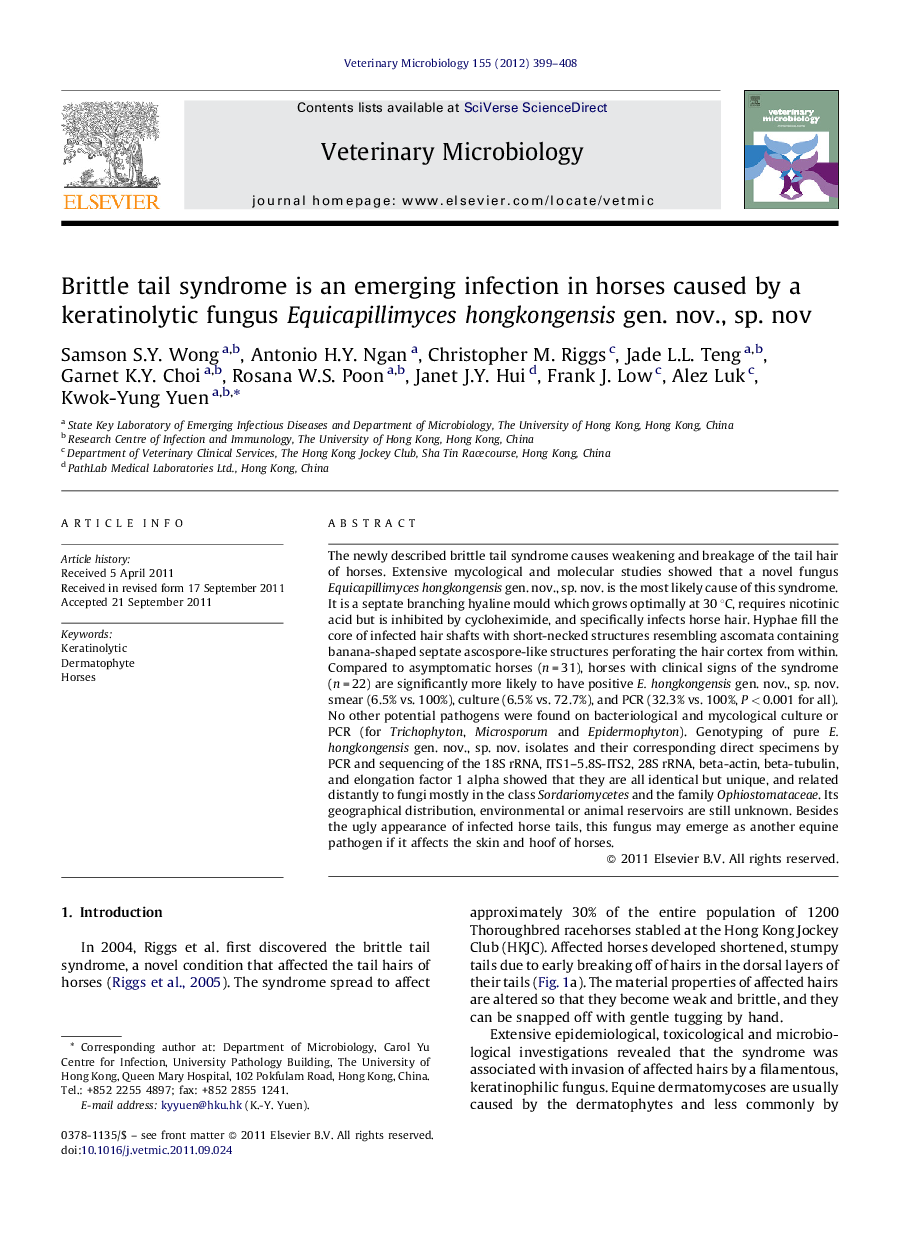| Article ID | Journal | Published Year | Pages | File Type |
|---|---|---|---|---|
| 2467466 | Veterinary Microbiology | 2012 | 10 Pages |
The newly described brittle tail syndrome causes weakening and breakage of the tail hair of horses. Extensive mycological and molecular studies showed that a novel fungus Equicapillimyces hongkongensis gen. nov., sp. nov. is the most likely cause of this syndrome. It is a septate branching hyaline mould which grows optimally at 30 °C, requires nicotinic acid but is inhibited by cycloheximide, and specifically infects horse hair. Hyphae fill the core of infected hair shafts with short-necked structures resembling ascomata containing banana-shaped septate ascospore-like structures perforating the hair cortex from within. Compared to asymptomatic horses (n = 31), horses with clinical signs of the syndrome (n = 22) are significantly more likely to have positive E. hongkongensis gen. nov., sp. nov. smear (6.5% vs. 100%), culture (6.5% vs. 72.7%), and PCR (32.3% vs. 100%, P < 0.001 for all). No other potential pathogens were found on bacteriological and mycological culture or PCR (for Trichophyton, Microsporum and Epidermophyton). Genotyping of pure E. hongkongensis gen. nov., sp. nov. isolates and their corresponding direct specimens by PCR and sequencing of the 18S rRNA, ITS1–5.8S-ITS2, 28S rRNA, beta-actin, beta-tubulin, and elongation factor 1 alpha showed that they are all identical but unique, and related distantly to fungi mostly in the class Sordariomycetes and the family Ophiostomataceae. Its geographical distribution, environmental or animal reservoirs are still unknown. Besides the ugly appearance of infected horse tails, this fungus may emerge as another equine pathogen if it affects the skin and hoof of horses.
